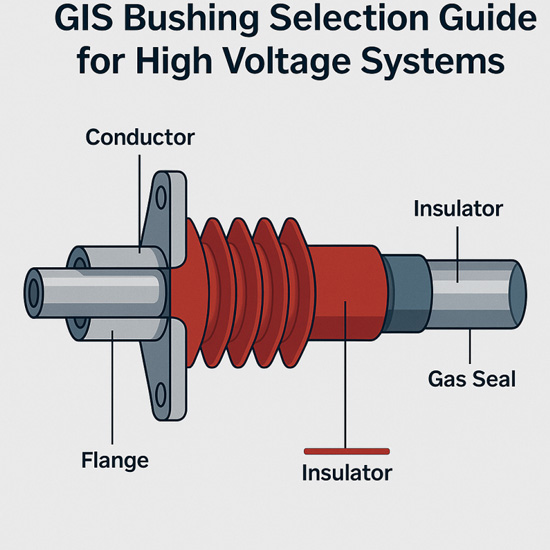Selecting the right GIS (Gas-Insulated Switchgear) bushing is a critical step in designing safe, compact, and long-lasting high-voltage substations. For engineers and procurement professionals, choosing the right bushing involves more than voltage class—it’s about ensuring compatibility, reliability, and long-term performance.

1. Voltage and Current Rating
First and foremost, ensure the GIS bushing is rated for the system’s voltage level—commonly from 66kV up to 500kV—and nominal current. Always verify that the bushing is tested according to IEC 62271-209 or IEEE C37.21 standards for high-voltage operation.
2. Gas Compatibility and Pressure Class
Modern GIS systems may use SF₆ or eco-friendly alternatives like g³ or dry air. Your bushing must have compatible internal materials and sealing systems to handle the pressurized gas environment (typically 0.5–0.7 MPa). Failure to match gas compatibility can cause leaks or insulation breakdown.
3. Sealing Technology
Long-term sealing is one of the most critical failure points. Look for bushings with multi-stage O-ring systems, epoxy barriers, or integrated gas seals. Factory-type testing for leak rate and pressure endurance should be available.
4. Creepage Distance and Pollution Performance
If your installation is in a coastal, industrial, or high-pollution area, ensure the bushing has extended creepage distance (≥ 25 mm/kV) and hydrophobic surface materials like HTV silicone or RTV coatings.
5. Bushing Interface and Mounting Type
Choose bushings with the correct flange type and mounting interface for your GIS tank design (e.g., EN, ANSI, or OEM-specific). Plug-and-play designs simplify installation and reduce retrofit costs.
6. Thermal and Mechanical Performance
If the bushing will be exposed to wide temperature fluctuations or vibrations (as in offshore wind or mobile substations), confirm its mechanical strength and thermally stable structure.
·Urban substations where space is limited
·Offshore platforms and marine substations
·Wind farm step-up transformers
·High-voltage test bays and modular switchgear
·Renewable energy grid interconnections
Incorrect GIS bushing selection can lead to gas leakage, partial discharges, system outages, and increased maintenance costs. A well-chosen bushing improves overall GIS system reliability, reduces downtime, and ensures safety under high voltage stress for decades.